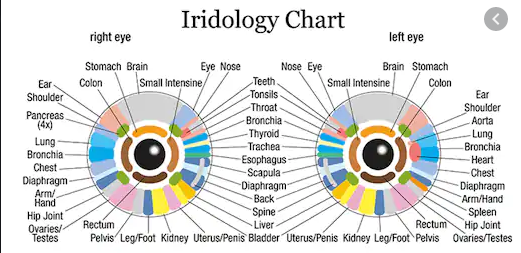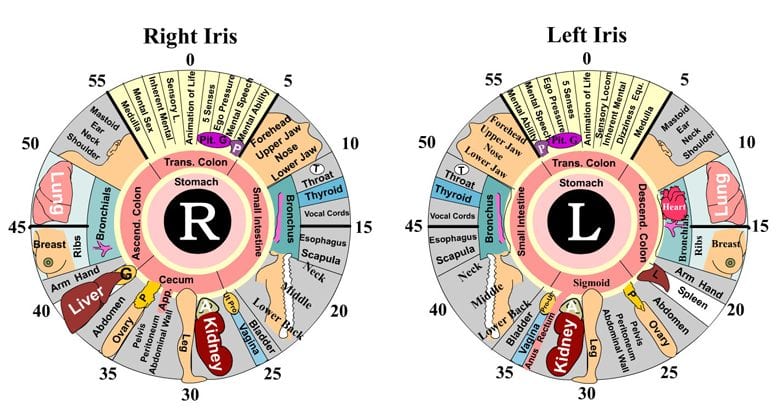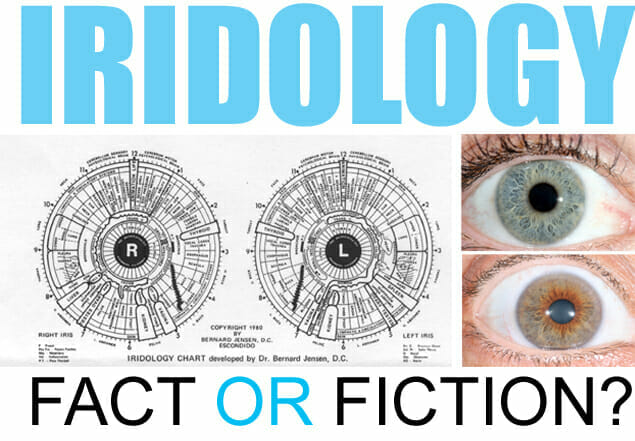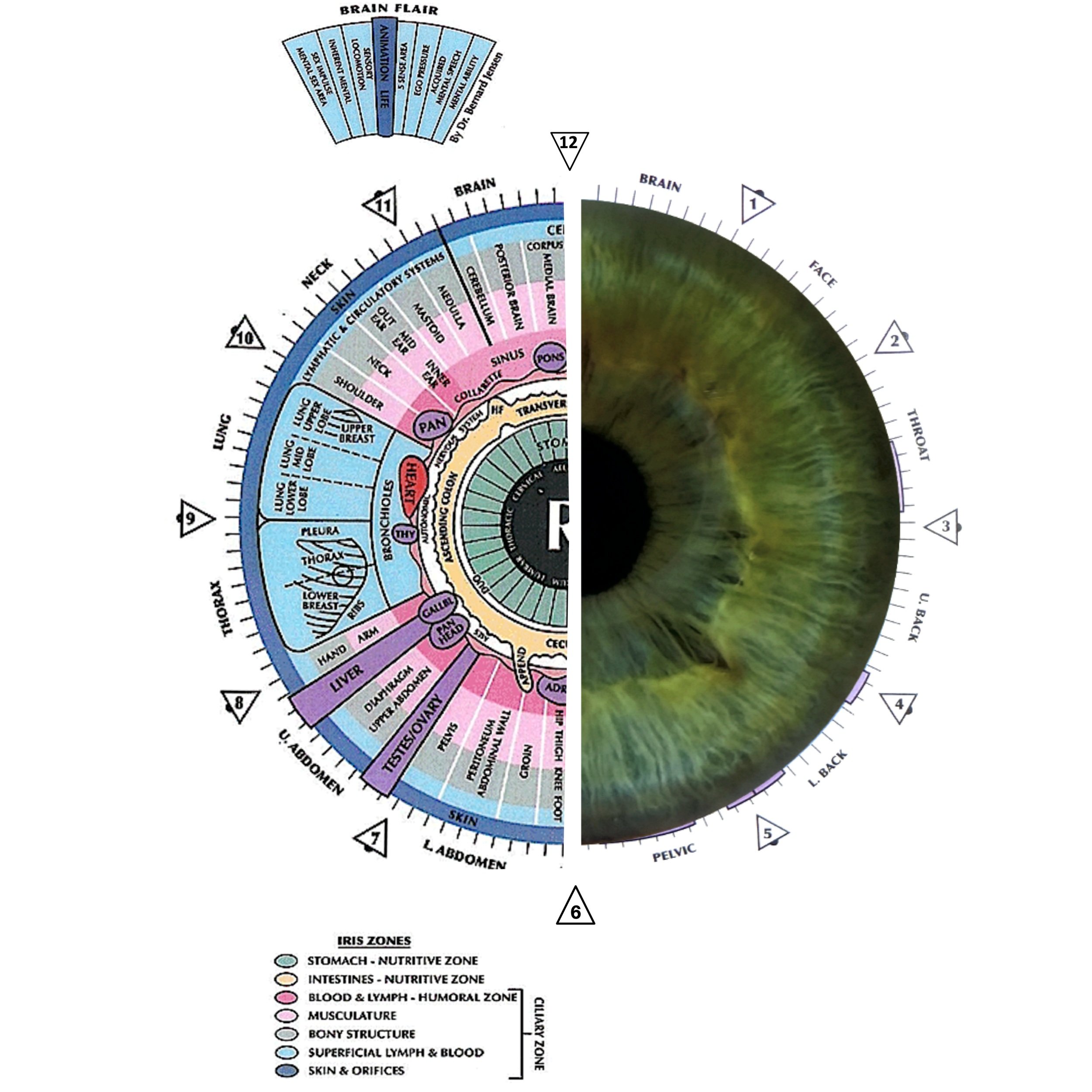Address
6050 N 9th Ave Suite D Pensacola FL 32504
Work Hours
Mon: 10am – 6pm
Tues: 10am – 6pm
Wed : 9am – 4pm
Thurs: 9am – 12pm
Fri - Sat- Sun: Closed
Address
6050 N 9th Ave Suite D Pensacola FL 32504
Work Hours
Mon: 10am – 6pm
Tues: 10am – 6pm
Wed : 9am – 4pm
Thurs: 9am – 12pm
Fri - Sat- Sun: Closed

Are you curious about the science behind iridology and whether it’s evidence-based? Look no further. At Emerald Coast Holistic Health, owned and operated by Holly Gibson, a certified Iridologist and Natural Health Advisor, you will find the answers you’re seeking. With nine years of experience in the alternative health field, Holly is passionate about helping individuals feel their best and providing wellness measures for the whole family. In a Health and Wellness consultation, she will discuss your ailments, address your concerns, and create a solid plan for your overall well-being. Discover the truth behind iridology and embark on a journey towards a healthier life.
Iridology is a alternative health practice that involves the study of the iris, which is the colored part of the eye. It is believed that the iris can provide valuable information about a person’s overall health and well-being. Iridologists analyze the patterns, colors, and other characteristics of the iris to help identify potential health issues and guide lifestyle changes. While iridology is not widely recognized as a conventional medical practice, it has gained popularity among holistic practitioners and individuals seeking natural, non-invasive approaches to health.
Iridology is the study of the iris to determine potential health issues and guide holistic health approaches. It is based on the belief that the iris reflects the state of the body’s organs and tissues.
The practice of iridology can be traced back to ancient civilizations such as the Egyptians, Chinese, and Greeks. However, it was Dr. Ignatz von Peczely, a Hungarian physician, who is often credited as the father of modern iridology. In the 19th century, Dr. von Peczely noticed changes in the iris of a bird he had accidentally injured and observed similar changes in his patients. This led him to develop the notion that specific areas of the iris correspond to specific organs and body systems.
Iridology is based on the belief that the eyes are connected to the rest of the body and can provide valuable insight into a person’s overall health. It is thought that the iris contains information about potential strengths and weaknesses in the body, as well as the presence of toxins and other imbalances.
The iris is a complex structure made up of different layers and tissues. Iridologists believe that the patterns, colors, and other characteristics of the iris can reveal information about a person’s genetic predispositions, potential health issues, and overall well-being.
Iridologists divide the iris into different zones, each of which correspond to specific organs and body systems. By examining these zones and reflexes, iridologists can identify potential imbalances or weaknesses in the corresponding areas of the body.

This image is property of images.ctfassets.net.
Iris analysis is the primary method used by iridologists to assess a person’s overall health. During an iris analysis, the practitioner uses a magnifying tool to examine the patterns, colors, and other characteristics of the iris. This analysis helps the practitioner identify potential health issues and develop a holistic health plan for the individual.
Digital iris imaging is a newer technique that involves capturing high-resolution images of the iris using specialized equipment. These images can be analyzed in greater detail and stored for future reference. This method allows for more precise analysis and comparison over time, aiding in the monitoring of overall health.
Iridology charts are visual representations that map out the different zones and reflexes of the iris. These charts provide a reference for iridologists during iris analysis, helping them identify and interpret the various signs, markings, and colors present in the iris.
One of the main criticisms of iridology is the lack of scientific evidence supporting its effectiveness. While there have been some studies conducted on iridology, the results have been inconclusive or contradictory. The scientific community generally views iridology as a pseudoscience.
Another criticism is the possibility of the placebo effect. Some argue that any perceived benefits from iridology are due to a person’s belief in the practice rather than any direct physiological effects.
There is also a lack of standardized interpretations among iridologists. Different practitioners may interpret the same iris differently, leading to inconsistent results and potential confusion for individuals seeking guidance.

This image is property of www.integrativenutrition.com.
Many holistic practitioners embrace iridology as a valuable tool for assessing a person’s overall health. They view it as a complementary approach that can provide additional insight into a person’s well-being and guide holistic treatment plans.
There are numerous personal testimonials from individuals who claim to have benefited from iridology. These testimonials often highlight improved health outcomes, better overall well-being, and a deeper understanding of their bodies’ needs.
While the scientific research on iridology is limited, there have been some studies conducted to explore its effectiveness. However, the results have been inconclusive and often conflicting. It is important to note that many of these studies were small-scale and lacked rigorous methodologies.
Research on iridology faces several challenges, including a lack of standardized protocols and inconsistent interpretations. Additionally, it can be difficult to isolate the effects of iridology from other holistic practices that individuals may be using simultaneously.

This image is property of media.mivision.com.au.
Some individuals and practitioners advocate for an integrative approach that combines iridology with conventional medical practices. They believe that iridology can provide additional insight and support to traditional medicine, leading to a more holistic understanding of a person’s health.
The position of iridology within the field of traditional medicine is a topic of debate. While some consider it to be a complementary practice that can be used alongside conventional treatments, others see it as an alternative approach that stands apart from traditional medicine.
One of the main roles of iridology is to identify potential health issues before they manifest as physical symptoms. By examining the patterns and characteristics of the iris, iridologists believe they can detect imbalances and weaknesses in the body.
Based on the findings from an iris analysis, iridologists can provide recommendations for lifestyle changes that may help improve overall health. These changes may include dietary modifications, stress reduction techniques, and the incorporation of specific supplements or herbs.
Iridology can also be used as a preventive measure, helping individuals identify and address potential health issues before they become more serious. By taking proactive steps to maintain optimal health, individuals may be able to prevent certain conditions from developing or worsening.

This image is property of images.squarespace-cdn.com.
When seeking an iridologist, it is important to look for one who has received proper training, certification, and continued education in the field. This can help ensure that the practitioner is knowledgeable and follows ethical standards.
Seeking referrals and recommendations from trusted sources can also be helpful when finding an experienced and reputable iridologist. Personal recommendations from individuals who have had positive experiences with a particular practitioner can provide valuable insights.
While iridology is not widely recognized as a conventional medical practice, it remains a popular choice among individuals seeking holistic approaches to health and well-being. The theory behind iridology suggests a connection between the eyes and the body, with the iris reflecting information about an individual’s overall health. While there is criticism and skepticism surrounding iridology, supporters believe in its potential to identify health issues, guide lifestyle changes, and promote preventive measures. It is important for individuals to make informed decisions and consider their own perspectives when exploring the use of iridology in their holistic health journeys.